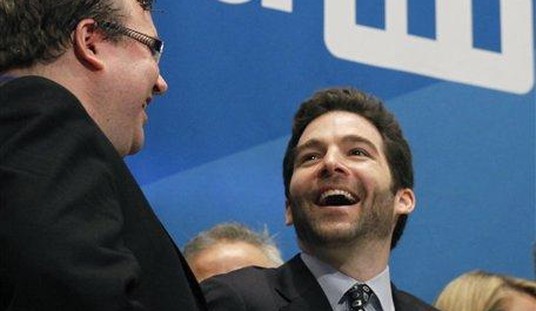The 1968 Democratic presidential primary is rightly remembered as a famous mess culminating in bloodshed.
It seemed likely that the unpopular President Lyndon Johnson would suffer a great embarrassment or even a primary loss after Robert Kennedy entered the race, prompting him to declare that he would neither seek nor accept his party’s nomination for another term. The Kennedy surge was cut short when he was shot and killed in a California hotel. The stage appeared set for a victory by the anti-war candidate Eugene McCarthy until George McGovern entered the race in late spring. The two fought a bitter race all the way until the party’s nominating convention where, despite the fact that he hadn’t even campaigned for the White House, Vice President Hubert Humphry emerged with his party’s nomination. Democratic powerbrokers believed that Humphry’s pro-war position was more in line with the rest of the nation, but the shock of the move sparked riots in the streets.
The spectacle served as the impetus for the reformation of the primary process and the elimination of the “smoky rooms” that handed the nomination to Humphrey. Those reforms resulted in the system that we have today in which Iowa and New Hampshire wield unparalleled influence over the nominating process. Democratic primary reforms were soon endorsed by the Republican Party, and the “smoky rooms” were gone for good.
While it is less true on the presidential level, where the wide ideological breadth of primary participants has a moderating effect on the eventual nominee, the primary reforms have arguably resulted in an increasing number of ideologically polarizing figures in office. According to a Cook Political Report’s Amy Walter’s review of Brookings senior fellow and journalist Jonathan Rauch’s new book, Political Realism: How Hacks, Machines, Big Money, and Back-Room Deals Can Strengthen American Democracy, many of the most well-meaning reforms to the nation’s political system have had the precise opposite of their intended effects.
“The primary process favors the most ideologically pure, not the most experienced,” Walter wrote. “The lack of a defined Congressional hierarchy (aka the old seniority system) discourages teamwork and encourages freelancing.”
“It’s impossible for a Member to ‘bring home the bacon,’ not simply because the earmark system has been dismantled, but because any member who did so would be pilloried at home by newspaper editorials and pushed through the buzz saw of haters on social media and cable TV,” she added. “But, if pork and gerrymandering and party bosses are so bad, how come politics seemed to work so much better when all were in full flourish and not under attack by reformers?”
The first thing we need to do, argues Rauch is to acknowledge that not all reform is good reform. The primary process, for example, was supposed to bring the candidate selection process out of shadows and into light. Smoke-filled rooms of power brokers would be replaced by engaged citizens who picked the candidate best representative of their views. It hasn’t really worked out that way, has it? Instead, primaries have become dominated by a subset of voters who are far from representative of the broader electorate. Meanwhile, there’s no functional reason that the primaries attract so few voters. Some states have ‘closed primaries’ that are accessible only to those who are registered in one party or the other, but most are open to all registered voters. Moreover, there’s no empirical evidence that reforming the way we vote in primaries – a la the top-two system in California – will encourage more people to vote.
In fact, what is keeping people from voting isn’t a lack of access. It’s that they don’t see that their vote matters. Meanwhile, those who do participate in the process – by voting, giving money and/or showing up at constituent meetings – are those who are the most invested in promoting an ideological agenda. The more ideological Congress becomes, the less focused it becomes on getting things done. It’s a vicious cycle.
The ideological polarization that has been confirmed and confirmed again anecdotally is a quantifiable phenomenon. An interesting chart produced by researchers at PLOS One (and flagged by the researchers at Vox.com) demonstrates visually how Congress has grown more polarized over the decades. What looks like the process of cellular mitosis is actually each party’s conference in Congress growing more ideologically homogenous.
But there is another school of thought that contends Congress is merely representative of an increasingly partisan and uncompromising voting public. Pew Research Center data from 1994 to 2014 demonstrates the extent to which average voters have begun to identify more with their party’s ideologues. As compromise has grown out of fashion, the legislature has begun to reflect that shift.
Are the primary process reforms responsible for ideological rigidity in elected officials, or are elected officials merely reflective of the increasingly ideological electorates that propel them into office? It’s a question without a satisfactory answer. But the issues raised in Rauch’s book are compelling. Those inclined to lament the American political system’s dysfunction should look to blame the well-intentioned reformers who made the perfect the enemy of the good.











Join the conversation as a VIP Member